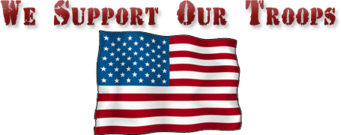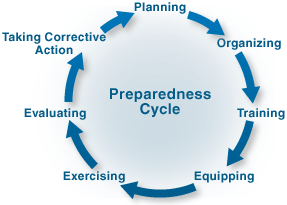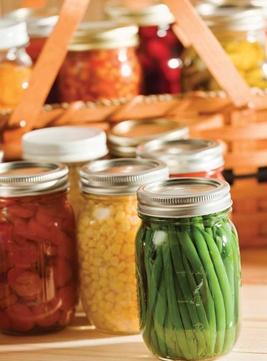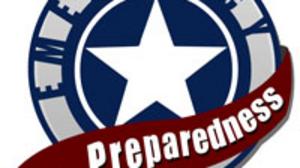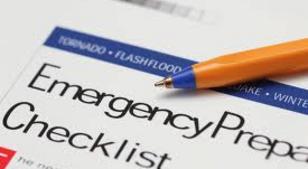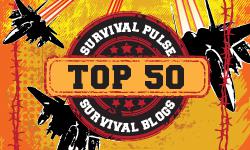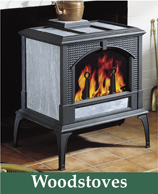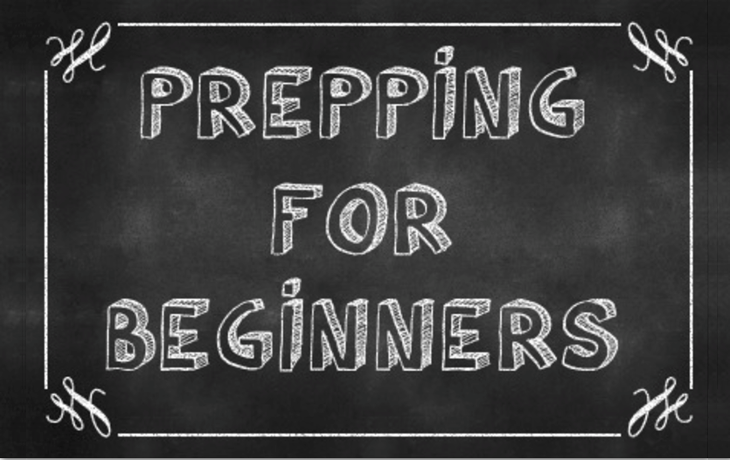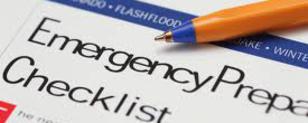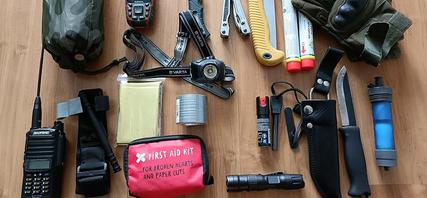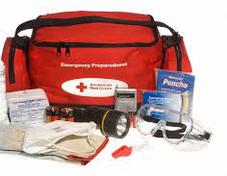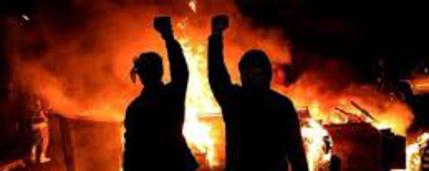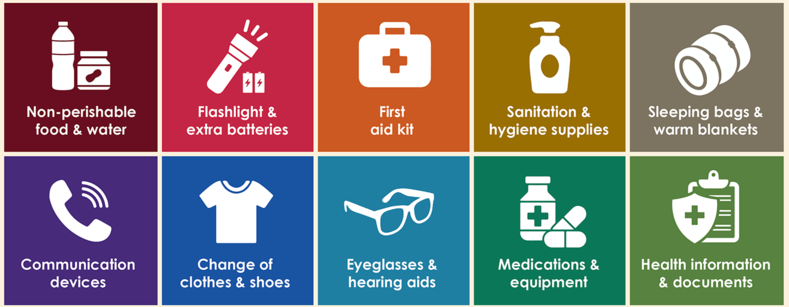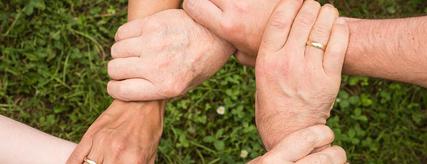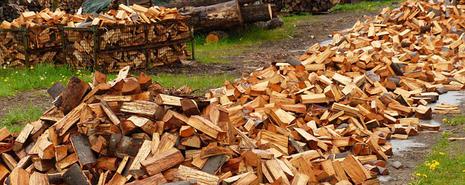AlreadyPrepared.com
Emergency Preparedness
WHAT IS A PREPPER?
As the preparedness movement continues to gain steam in America today, many are starting to ask what it all really means? A lot of people throw around the term “prepper”, as an alternative to “survivalist” and it’s no surprise. But what exactly is a “prepper”? A prepper isn’t simply someone who’s thinking about the future or wanting to be prepared. Anyone can be prepared but I think true prepper's live a lifestyle of preparedness focused around clearly defined principles and continuous personal improvement.
While everyone may have their own definition of what a “prepper” is, here’s mine:
A true prepper:
Already has or is in the process of obtaining food, water, medicine and other storage items needed to care for themselves and their families in the event of a long term emergency.
Has or is attempting to gain the knowledge needed to protect themselves and their families from physical harm including self defense training, home protection strategies, weapons and tools, etc.
Attempt to make their lives more sustainable in every feasible way such as installing passive energy systems, organic gardening, reducing dependency on petroleum, etc.
Is someone who takes responsibility for their life.
Has stewardship over mind, body and soul.
Always seeks to become less reliant on systems or technologies.
Is wise and frugal, always avoiding debt and wasteful spending.
Is always learning and expanding their personal knowledge.
Understands that no one is immune from danger.
Is consciences of their environment, aware and ready.
Cares about their community and strives to make it a better one.
Has and uses common sense.
Walks in light and love and has the wisdom to shut out fear and negative thought patterns.
Takes the actions necessary to survive and thrive in their environment.
Is adaptable, changing, and if need be – ready to take control of a crisis situation.
Has a strong will and is ready to face obstacles, even in the face of fear.
Is a good Samaritan and does not work against peace and good will.
Believes in and when necessary fights for freedom and basic rights.
Values what they have and works to live providently.
Believes in themselves and they causes they stand for.
Preparedness is a mindset, a movement and internal state of being that is centered in spirituality, truth, knowledge, wisdom, and good old fashioned patriotism.
Do you have what it takes to call yourself a prepper?
Preparedness Page
AlreadyPrepared @ www.AlreadyPrepared.com
A KLEDC Company
Kentucky Lake, USA 42048
THE PREPPER MOVEMENT: WHY ARE MILLIONS OF PREPPERS PREPARING FEVERISHLY FOR THE END OF THE WORLD AS WE KNOW IT?
In America today, there are millions of “preppers” that are working feverishly to get prepared for what they fear is going to happen to America.
There is a very good chance that some of your neighbors or co-workers may be preppers. You may even have noticed that some of your relatives and friends have been storing up food and have been trying to convince you that we are on the verge of “the end of the world as we know it”. A lot of preppers like to keep their preparations quiet, but everyone agrees that the prepper movement is growing. Some estimate that there are four million preppers in the United States today. Others claim that there are a lot more than that. In any event, there are certainly a lot of preppers out there. So exactly what are all these preppers so busy preparing for?
Well, the truth is that the motivation for prepping is different for each person. Some preppers believe that a complete collapse of the economy is coming. Others saw what happened to so many during Hurricane Katrina are are determined not to let that happen to them. Some preppers just want to become more independent and self-sufficient. There are yet others that are deeply concerned about “end of the world as we know it” scenarios such as terrorists using weapons of mass destruction, killer pandemics, alien invasions, World War III or EMP attacks.
But whatever the motivation is, the prepper movement is clearly growing. Today, millions of Americans are converting spare rooms into storage pantries, learning how to grow survival gardens and stocking up on everything from gas masks to auxiliary generators.
There is a tremendous amount of diversity among preppers, but that they also clearly share a common passion….
They are a diverse bunch. All different shapes, sizes, ages, gender and political persuasions.
Some are ex-military. Some never served. Some are unemployed, some have jobs. A few are retired.
But they all share a common bond: They call themselves Preppers
Never before in U.S. history have we seen anything like this. We are at peace and most of us still have a relatively high standard of living and yet millions of Americans feel called to start preparing for the worst.
A lot of preppers don’t like to publicize the fact that they are prepping. Alot of preppers try very hard to keep their prepping to themselves…..
They are trying to keep their passion for prepping hidden from neighbors and, in some cases, employers who they say would frown on their association with such a group.
Many people believe that it takes a lot of money and resources to be a prepper, but that is not necessarily the case.
For some, the best way to get prepared is to radically simplify things.
Other people make the most of what they already have. It is absolutely amazing what some families are able to do with limited resources
So should the rest of us be preparing?
Of course we should be. Our nation is drowning in debt, the U.S. economy is dying, the number of earthquakes and other natural disasters is increasing, and the entire globe is becoming an extremely unstable place. If you read my articles on a regular basis, then you know that there are a whole host of reasons to try to become more independent and self-sufficient.
So what can we all do to get prepared?
Well, in a previous article I listed a few things that can be done by most people….
#1 Become Less Dependent On Your Job
#2 Get Out Of Debt
#3 Reduce Expenses
#4 Purchase Land
#5 Learn To Grow Food
#6 Find A Reliable Source Of Water
#7 Explore Alternative Energy Sources
#8 Store Supplies
#9 Protect Your Assets With Gold And Silver
#10 Learn Self-Defense
#11 Keep Yourself Fit
#12 Make Friends
Don't take being prepared for granted...get prepared now!
HOW TO MAKE A 72 HOUR KIT FOR
EMERGENCY PREPAREDNESS
Most American patriots and responsible community members should have a food storage plan and be prepared for any emergency which includes having a 72 hour kit. This kit should be put together in a practical manner so that you can carry it with you if you ever need to evacuate your home. It is also important to prepare one for each member of your family who is able to carry one.
Below is a list of items to store in a 72 hour kit to help you be prepared in the case of an emergency.
Directions: Print this list and check off each item that has been put into your 72 hour kit.
Checklist:
Food and Water
(A three day supply of food and water, per person, when no refrigeration or cooking is available)
Protein/Granola Bars
Trail Mix/Dried Fruit
Crackers/Cereals (for munching)
Canned Tuna, Beans, Turkey, Beef, Vienna Sausages, etc ("pop-top" cans that open without a can-opener might not be a good idea, read this warning from one site visitor.)
Canned Juice
Candy/Gum (warning: Jolly Ranchers can melt and using mint gum might make everything taste like mint.
Water (1 Gallon/4 Liters Per Person)
Bedding and Clothing
Change of Clothing (short and long sleeved shirts, pants, jackets, socks, etc.)
Undergarments
Rain Coat/Poncho
Blankets and Emergency Heat Blanks (that keep in warmth)
Cloth Sheet
Plastic Sheet
Fuel and Light
Battery Lighting (Flashlights, Lamps, etc.) Don't forget batteries!
Extra Batteries
Flares
Candles
Lighter
Water-Proof Matches
Equipment
Can Opener
Dishes/Utensils
Shovel
Radio (with batteries!)
Pen and Paper
Axe
Pocket Knife
Rope
Duct Tape
Personal Supplies and Medication
First Aid Kit and Supplies
Toiletries (roll of toilet paper- remove the center tube to easily flatten into a zip-lock bag, feminine hygiene, folding brush, etc.)
Cleaning Supplies (mini hand sanitizer, soap, shampoo, dish soap, etc. Warning: Scented soap might "flavor" food items.)
Immunizations Up-to Date
Medication (Acetaminophen, Ibuprofen, children's medication etc.)
Prescription Medication (for 3 days)
Personal Documents and Money
(Place these items in a water-proof container!)
Scriptures
Genealogy Records
Patriarchal Blessing
Legal Documents (Birth/Marriage Certificates, Wills, Passports, Contracts, etc)
Vaccination Papers
Insurance Policies
Cash
Credit Card
Pre-Paid Phone Cards
Miscellaneous
Bag(s) to put 72 Hour Kit items in (such as duffel bags or back packs, which work great) Make sure you can lift/carry it!
Infant Needs (if applicable)
Notes:
1. Update your 72 Hour Kit every six months (put a note in your calendar/planner) to make sure that: all food, water, and medication is fresh and has not expired; clothing fits; personal documents and credit cards are up to date; and batteries are charged.
2. Small toys/games are important too as they will provide some comfort and entertainment during a stressful time.
3. Older children can be responsible for their own pack of items/clothes too.
4. You can include any other items in your 72 Hour Kit that you feel are necessary for your family's survival.
5. Some items and/or flavors might leak, melt, "flavor" other items, or break open. Dividing groups of items into individual Ziploc bags might help prevent this.
HOW TO MAKE A FIRST AID KIT
Checklist of Standard First Aid Kit Supplies
Having a first aid kit is an important part of emergency preparedness. You should have a first aid kit for both your home food storage and (as a condensed version) 72 hour kits.
Directions: Print the notes and list of first aid supplies. Check off each item that has been put into your first aid kit. This checklist (partially compiled from the booklet, Essentials of Home Production & Storage gives recommendations for putting together a standard first aid kit.
Checklist: First Aid Kit Supplies
Notes:
1. Update your first aid kit every six months (put a note in your calendar/planner) to replenish and check all supplies. Expired or contaminated items should be replaced.
2. Check with your family doctor for any specific medicines and first aid supplies your family might require for an emergency.
3. Some items may leak or break open. Using tubes, plastic bottles, or Ziploc bags can help prevent contamination.
4. All first aid supplies should be labeled and organized for quick and easy use.
5. Supplies may be divided and organized into compartments or sections for easier access when using your first aid kit.
6. You may include any other first aid items you feel would be useful or necessary.
7. A condensed version of this first aid kit should also be included in your 72 hour kit.
Standard First Aid Kit Supplies
Container (metal, wood, or plastic) with a fitted cover to store first aid kit
First Aid Booklet (including CPR)
Prescribed Medications
Any critical medical family histories
Adhesive
Ammonia
Bicarbonate of soda
Calamine lotion (sunburn/insect bites)
Diarrhea remedy
Elastic bandages
Gauze bandages
Hot-water bottle
Hydrogen peroxide
Ipecac syrup (induces vomiting)
Knife
Matches
Measuring cup
Medicine dropper
Needles
Paper bags
Razor blades
Rubbing alcohol
Safety pins
Scissors
Soap
Thermometer
Triangular bandages
Tweezers
Prescriptions
Consecrated oil
Additional First Aid Kit Supplies
Immunization records
Medications for children (if applicable)
Fever reducing medications such as aspirin, acetaminophen, or ibuprofen
Allergy medication
Antibacterial wipes
Antibiotic ointment
Antiseptic wipes
Band-aids
Burn ointment/spray
Cotton balls
Cough syrup/cough drops
Disposable blanket
Eye drops/eye wash
Feminine Hygiene
Gloves
Hand sanitizer
Hot and cold instant packs
Hydrocortisone cream
Lip ointment (chap stick)
Medical tape (waterproof & regular)
Nail clippers
Needle and thread
Snake bite kit
Sterile strips
Sunscreen/lotion
Tourniquet kit
Vaseline
Water purification tablets
This checklist gives basic recommendations for putting together a standard first aid kit.
60 EMERGENCY SUPPLIES
YOU CAN BUY FOR A BUCK
Here are some preparedness supplies that can be purchased for just a dollar. Let's start with the local Dollar Store and see where it goes.
Are you ready to do some budget prepping?
60 Prepping Items You Can Buy for a Dollar
1. Bottled Water
2. Canned Meats
3. Canned Fruits and Vegetables
4. Canned Juice
5. Nuts and Crackers
6. Candies
7. BIC Lighters
8. Paper Cups and Plates
9. Plastic Utensils
10. Plastic Table Covers
11. Non-Electric Can Opener
12. Paper Towels
13. Aluminum Foil
14. Plastic Storage Bags/Containers
15. Garbage Bags
16. Toilet Paper
17. Plastic Buckets
18. Sponges
19. Disinfectants
20. Chlorine Bleach
21. Bar Soap
22. Laundry Soap
23. Flashlights
24. Batteries
25. Candles
26. Butane Matches
27. Wood Matches
28. Spray Bottles
29. Scissors
30. Hand Tools
31. Duct Tape
32. Utility Knife
33. Plastic Sheeting
34. Garden Trowels
35. Personal Hygiene Items
36. Vitamins
37. Sunscreen Lotion
38. Sewing Kit
39. Latex Gloves
40. Cleansing Agent/Soap
41. Antibacterial Towelettes
42. Antibacterial Ointment
43. Antiseptic Ointment
44. Adhesive Bandages
45. Tweezers
46. Aspirin/Non-Aspirin Pain Reliever
47. Cotton Balls
48. Baby Bottles
49. Baby Wipes
50. Paper & Notepads
51. Pencils/Pens
52. Whistles
53. Jigsaw Puzzles
54. Card Games
55. Coloring Books & Crayons
56. Toys
57. Pet Food
58. Pet Bowls
59. Leash and Collar
60. Emergency Ponchos
Beyond the Dollar Store
The local dollar store is not the only place you will find bargains. The back aisles of many drugstores and even big box home improvement stores will have deals if you take the time to seek them out. And then there is the online kingpin, Amazon.
I often will point out “Almost Free” items in the BDS Bargain Bin and also on the Almost Free Page. There you will find whistles, can openers, pocket tools, flashlights and more.
The Final Word
I frequently recommend that you should purchase the very best you can afford. Still, sometimes you need something and don’t have the extra cash to purchase the best. Or perhaps you need extra, backup supplies.
When that happens, buying things from the dollar store or some other bargain outlet simply makes good sense. Besides, it is fun to shop for bargains. And don’t forget, you can hone skills and increase your knowledge for free.
There are so many things that you can do to get prepared – all you really need is to get off your butt and start!
TOP 10 WAYS TO PREPARE FOR THE
TOTAL COLLAPSE OF SOCIETY WITHOUT
LOOKING LIKE A (COMPLETE) LUNATIC
The end is near
It’s been a crazy past few years. We’ve seen gas prices hit all-time highs, been hit by major and catastrophic weather disasters, and watched as banks and major financial institutions disappear overnight in the midst of what appears to be an actual, real-life economic depression. Our stable, comfortable lives suddenly don’t seem so stable any more.
Here are 10 things you can do to improve your chances of riding out a major disaster without looking like a total lunatic. If you get all 10 of these items checked off, let me know so I can come crash at your place when aliens attack.
1. Build a stockpile of food
Having a stockpile of food is a great first step to take to protect your food security (in addition to planting a garden, learning to hunt and building a greenhouse). Stocking up on your favorites also means you’ll be eating Klondike bars and Skittles years after the factories shut down for sheer lack of ingredients and energy. You should have enough food on hand to feed you and your family for at least three months. It wouldn’t be a bad idea to have more, too, since food will be a great asset in bartering.
2. Get to know your neighbors
Seriously, good neighbors make good fences. One of the first things that will go when the Bad Times come is regional civility and trust. Battle lines will be drawn between towns and communities in a fight over the last pockets of supplies, industry and production. People protect their family and their friends. Make friends with people in your neighborhood. When unknown terrorists attack our major cities with nuclear bombs, having a strong local network of friends will put you in a better position to ride out the few decades of chaos sure to follow.
3. Build a 15-foot-high electrified fence
Hopefully the zombies that pop up after the uprising will be the slow and shuffling kind, not the fast and jumpy ones. A 15-foot-high electrified fence should just about do the trick for the slower undead, but you still might want to add a few spikes to be safe. You might have some issues with your zoning board getting a 15-foot-high electrified fence installed. As with any home improvement project, just check with your local building inspector’s office on that one and don’t be afraid to make compromises.
4. Learn to hunt
Having a garden and greenhouse is one of two requirements in the event of disaster food planning. Having a gun and the ability to shoot and eat animals is the other. Get a gun, take a hunter’s safety course and go shoot something. Learn how to gut it, skin it, and process and preserve its tasty, bloody flesh. Being able to procure your own protein will be vital in the months and years after a disaster. You’ll most likely have to gun down dozens of attackers in the few years of living you’ll be able to scratch out after Manbearpig’s victory.
5. Get handy!
It’s a sad but true fact that bloggers won’t have many job prospects in the time after the great sickness. Those of us who survive the government-created superflu will find a new world that suddenly sees no value in reality TV stars, stock brokers, accountants and eco bloggers. The carpenters, engineers (the useful kind like civil engineers, not those soon-to-be-worthless software engineers) and farmers will be the ones who have the status.
6. Make your own biodiesel
What would the post-apocalypse be without badass armored vehicles? Let the bikers and scavengers fight over the dwindling stock of gasoline and brew your own biodiesel. For as little as a few hundred bucks you can be set up with a home-brew biodiesel kit. Spend a few hours on a Sunday every month and forget about filling up at the local gas station. And when the ants rise up and take over all forms of government, you’ll be able to stay ahead of our new teeming mass of overlords in your pimped-out, biodiesel-powered 4Runner.
7. Build a greenhouse
This ties in nicely with growing a garden. A greenhouse allows you to get a jump on spring and start seedlings ahead of the last frost, assuming the nuclear winters don’t freeze us all to death first. Greenhouses can be built with simple supplies and designs or constructed as master-built houses incorporated into $20 million estates. A greenhouse gives you more control over the environment your plants are grown in, and it’s a nice backup if resurrected dinosaurs take out your outside garden. Greenhouses are also easier to defend, which is good when you have to repel the sun-hating, virus-carrying monster-human hybrids.
8. Grow a backyard garden
Growing a garden in your back yard will save you money on your shopping bill now, but will literally save your life when aliens invade and the world destroys itself fighting off the invasion. People are doing miraculous things with very small spaces, turning typical suburban back yards into teeming microfarms that produce a wide and tasty array of fruits and vegetables. It might not be a bad idea to invest in a few robot machine-gun nests to protect the crop after the invasion.
9. Collect and filter your rain water for home use
A lot of water gushes down your gutter pipes during a rain storm. A typical suburban roof has about 1,000 square feet of rain-catching surface that could be put to good use with the strategic placement of a barrel or two. If a meteor strikes the nation’s capital and we’re cast into anarchy, it’s a good bet your city water will stop flowing after the food riots subside. Assuming it rains where you live, you could provide drinking water for a small family with a couple of good rain barrels.
10. Get solar power
Having solar panels on your roof not only reduces your utility bill, but also puts you in the enviable position of having power when nature strikes down the energy grid. They’ll eventually pay for themselves and they’re also a great hedge against future spikes in energy costs. In the event of a disaster, you’ll have power to fend off the zombies, nuclear mutants and ninja biker gangs
FAMILY EMERGENCY PLAN
MAKE A PLAN
Your family may not be together when a disaster strikes so it is important to plan in advance: how you will get to a safe place; how you will contact one another; how you will get back together; and what you will do in different situations.
You should also inquire about emergency plans at places where your family spends time: work, daycare and school, faith organizations, sports events and commuting. If no plans exist, consider volunteering to help create one. Talk to community leaders, your colleagues, neighbors and members of faith or civic organizations about how you can work together in the event of an emergency. You will be better prepared to safely reunite your family and loved ones during an emergency if you think ahead and communicate with others in advance.
Have a plan for traveling between work and home, and other commonly visited locations, in case of an emergency.
PLAN FOR YOUR PETS IN AN EMERGENCY
Caring for Animals
If you are like millions of animal owners nationwide, your pet is an important member of your household.
Unfortunately, animals are also affected by disaster.
The likelihood that you and your animals will survive an emergency such as a fire or flood, tornado or terrorist attack depends largely on emergency planning done today. Some of the things you can do to prepare for the unexpected, such as assembling an animal emergency supply kit and developing a pet care buddy system, are the same for any emergency. Whether you decide to stay put in an emergency or evacuate to a safer location, you will need to make plans in advance for your pets. Keep in mind that what's best for you is typically what's best for your animals.
If you evacuate your home, DO NOT LEAVE YOUR PETS BEHIND! Pets most likely cannot survive on their own and if by some remote chance they do, you may not be able to find them when you return.
If you are going to a public shelter, it is important to understand that animals may not be allowed inside. Plan in advance for shelter alternatives that will work for both you and your pets; consider loved ones or friends outside of your immediate area who would be willing to host you and your pets in an emergency.
Make a back-up emergency plan in case you can't care for your animals yourself. Develop a buddy system with neighbors, friends and relatives to make sure that someone is available to care for or evacuate your pets if you are unable to do so. Be prepared to improvise and use what you have on hand to make it on your own for at least three days, maybe longer.
Plan for pet needs during a disaster by:
Identifying shelter. For public health reasons, many emergency shelters cannot accept pets. Find out which motels and hotels in the area you plan to evacuate to allow pets well in advance of needing them. There are also a number of guides that list hotels/motels that permit pets and could serve as a starting point. Include your local animal shelter's number in your list of emergency numbers. They might be able to provide information concerning pets during a disaster.
Take pet food, bottled water, medications, veterinary records, cat litter/pan, manual can opener, food dishes, first aid kit and other supplies with you in case they're not available later. Before you find yourself in an emergency situation, consider packing a "pet survival" kit which could be easily deployed if disaster hits.
Make sure identification tags are up-to-date and securely fastened to your pet's collar. If possible, attach the address and/or phone number of your evacuation site. If your pet gets lost, his tag is his ticket home.
Make sure you have a current photo of your pet for identification purposes.
Make sure you have a secure pet carrier, leash or harness for your pet so that if he panics, he can't escape.
FAMILY COMMUNICATIONS
Your family may not be together when disaster strikes, so plan how you will contact one another. Think about how you will communicate in different situations.
Complete a contact card for each adult family member. Have them keep these cards handy in a wallet, purse or briefcase, etc. Additionally, complete contact cards for each child in your family. Put the cards in their backpacks or book bags.
Check with your children’s day care or school. Facilities designed for children should include identification planning as part of their emergency plans.
FAMILY COMMUNICATION TIPS
Identify a contact such as a friend or relative who lives out-of-state for household members to notify they are safe. It may be easier to make a long-distance phone call than to call across town, so an out-of-town contact may be in a better position to communicate among separated family members.
Be sure every member of your family knows the phone number and has a cell phone, coins or a prepaid phone card to call the emergency contact. If you have a cell phone, program that person(s) as "ICE" (In Case of Emergency) in your phone. If you are in an accident, emergency personnel will often check your ICE listings in order to get a hold of someone you know. Make sure to tell your family and friends that you’ve listed them as emergency contacts.
Teach family members how to use text messaging (also known as SMS or Short Message Service). Text messages can often get around network disruptions when a phone call might not be able to get through.
Subscribe to alert services. Many communities now have systems that will send instant text alerts or e-mails to let you know about bad weather, road closings, local emergencies, etc.
EMERGENCY PREPAREDNESS PRODUCTS
Emergency preparedness products can protect you and your family in case something goes wrong. In some cases, they can even save your life. There are many different reasons to create a survival kit, and there are many different preparedness supplies to choose from. Many people put off making an emergency kit because they don't feel an immediate threat. This is one of the biggest mistakes you can make. The problem with not preparing ahead of time is that when disaster strikes, it will be too late. The world is an uncertain and at times a dangerous place, so it's important to be prepared in case of an emergency. Making a survival kit doesn't mean that something terrible will happen, but just in case it does, you'll be prepared.
There are countless reasons to buy emergency preparedness products. The most common reason why people choose to make a survival kit is natural disasters. In recent years, there have been a number of devastating natural disasters.
Unfortunately, they can't be prevented and a number of them happen every year. Having preparedness supplies on hand if a natural disaster strikes in your area means that you'll have all the essentials you and your family need while you wait for help to arrive. You can't always rely on emergency services in such situations. Due to debris and a large number of people who need help, it can take a while for them to reach you.
In case that happens, you will need the basics such as food, water, clothes, and blankets. Natural disasters are not the only reason why you should invest in emergency preparedness products<a/>. Hard economic times have forced many people to stockpile food and other items for the future. The recent recession has had a big impact on today's society. If your finances are currently stable, you might want to get a few things for the future in case things take a downturn. Should you lose your job or face other financial hardships, you'll have the security of knowing that you don't have to worry about buying essential supplies such as food for your family.
Although not as serious as a natural disaster or financial trouble, power outages can also cause severe problems. Sometimes storms can leave you without power for days. Power outages happen to most people at one point or another. When they do, you need to have candles and nonperishable food. These supplies are very affordable and will make your life a lot easier when you experience a power outage.
Emergency preparedness products are affordable and easy to store. More importantly, they can save you and your family if anything goes wrong. The truth is that life is unpredictable, and you never know when you might have to face an emergency. Being prepared for everything from natural disasters to power outages will allow you to feel more secure about the future.
PREPARING YOUR BUSINESS FOR AN EMERGENCY
The Occupational Health and Safety (OSH) Act, 1993, requires that employers bring about and maintain, as far as reasonably practicable, a work environment that is safe and without risk to the health of the employees. However, Action Training Academy Director Alastair Farish points out that many businesses are unaware of what is required of them by law, as well as how to create a healthy, safe and prepared environment, which empowers workers with the knowledge and skills to act if an emergency occurs," says Farish.
A solution to scenarios such as medical emergencies, unexpected fires or building evacuations is a structured approach, in line with the OSH Act's requirements as well as regulations of the South African Bureau of Standards (SABS) as outlined below:
SABS 0400 (Section T Fire Protection): This regulation looks at aspects such as a building's occupancy classification, how many extinguishers are needed per square metre, how many people occupy each square metre, as well as the location of the extinguishers within the building, etc…
SABS 0139 (Fire Protection Planning): This regulation looks at the following aspects: emergency evacuation routes, the width of the evacuation routes, the number of people the staircases can handle, the number of routes there should be per floor as well as throughout the entire building depending on occupancy, etc…
SABS 1475 (Fire Fighting Equipment): This regulation looks at aspects such as how to service fire extinguishers, hose reels and hydrants; including the required flow rates.
Through years of exposure and experience to various health and safety systems and regulations, Action Training Academy has developed a product that is flexible in its application to ensure that all companies are able to apply the product principles.
"The product principles are structured around three steps: health and safety training, health and safety equipment supply and health and safety management," explains Farish. Through awareness creation and preparedness in the following three steps, companies are minimising their chances of experiencing catastrophic loss, should an emergency strike.
Step One: health and safety training
As per the OSH Act and emergency management services stipulations, companies are required to ensure that their workforces are trained in the disciplines of fire-fighting, first-aid, evacuation and health and safety planning.
Farish points out that it is important to ensure that the trained health and safety team is evenly spread out across the organization's building structure.
"Take for example a large organization that is spread across ten building blocks. If there is a heart attack in building number eight, then it is of utmost importance that there is a person trained in first aid in building number eight. There have been instances whereby all the first aiders for the organization are located in one building," says Farish.
He points out that it is best practice to have a first aider located within four to six minutes of any location within the organization.
"If someone suffers cardiac arrest, artificial ventilation should be administered within 4 to 6 minutes – if this doesn't happen, irreversible tissue damage to the brain can occur. It would be fortunate for professional assistance to arrive on the scene of an emergency within ten to twelve minutes – by this time it is too late. This is why it is so critical to have an even spread of first aiders within an organization," explains Farish.
In addition, it is important to carefully select staff for each role and to ensure that each health and safety team member is only trained in one of the disciplines.
"Very often we find that in haste to complete training requirements, organization's often train one person in first aid, fighting and evacuation – only to find that during an emergency or drill, they can only fulfill one role. Have three people trained in separate disciplines, as opposed to one person in all three disciplines. It is important to spread these lifesaving skills across the workforce," says Farish.
Step Two: Health and Safety equipment
With a trained health and safety team and workforce, an organization needs to ensure that the legislative requirements with regards to emergency health and safety equipment are up to scratch.
"It is difficult for organizations to determine what they actually need according to the regulatory requirements, as it is quite complex and there is definite science behind it. Action Training Academy's specialist consultants often assist organizations with what equipment is necessary in order to comply with regulatory requirements," explains Farish.
The consultants review the premise size, production, and occupancy classification from which a detailed emergency evacuation plan is drafted and installed. Technicians then supply, install and maintain the fire-fighting equipment and health and safety equipment, which is outlined below:
First-aid boxes – the Regulation 7 first-aid kit is the ideal kit that organizations should have on site, determined by the DOL and stipulate actual content of the kit.
Fire-fighting equipment – the correct volume and quantities of the correct type of equipment is critical and legislated in various SABS regulations.
Emergency directional signage and planning – to successfully evacuate and locate the emergency equipment, the organization needs to have correctly planned and displayed directional signage and detailed evacuation plans.
Emergency evacuation drills – organizations are required to carry out emergency evacuation drills bi-annually. The drill report should be kept on file in the event of any queries being raised by regulatory bodies/authorities.
Farish cites a recent emergency evacuation drill that Action Training Academy coordinated for a large organization based in Johannesburg. The drill had to be carried out across ten buildings containing over 3 500 staff. Action Training Academy made use of simulation kits which created realistic scenarios.
The organization's health and safety team - consisting of numerous fire wardens, first-aiders and evacuation leaders - had the opportunity to practice their skills acquired through their health and safety training. Emergency Management Services as well as various other private emergency services were also on hand during the drill.
"Once the drill is complete, we compile a report for the organization, which includes aspects such as problems encountered (e.g.: staff using lifts, not stairs), evacuation times and proposed methods of improvement. The organization's health and safety committee then relays the feedback to management and staff," explains Farish.
"The DOL is increasing the number of inspectors in the field to monitor the health and safety activities of organizations. If an inspector finds that there has been loss of limb or life due to negligence, employees, management or the organization could be liable to a heavy fine, imprisonment or both" explains Farish.
Step three: health and safety management
The success of creating a healthy safe and prepared environment depends largely on senior management/executive buy-in as well as the establishment of a health and safety committee. The committee is the backbone of an organization's health and safety strategy.
The committee is made up of health and safety supervisors and representatives, who are required by law to meet a minimum of every three months. The formation of an effective health and safety committee will provide guidance on:
1. Health and safety executive policy and statement
2. Health and safety organograms (where the health and safety team is based within the organization)
3. Health and safety appointment letters (according to the act you have to appoint the health and safety team members)
4. Health and safety check sheets
5. Incident and accident and workmen's compensation commission correspondence
6. General information
Action Training Academy's health and safety management solution is tailor-made to a fit into an organization's brand and structure.
"Action Training Academy aims to assist organizations in preparing themselves for unplanned emergency crises. Our philosophy is to create awareness and preparedness and, in so doing, minimizing risk and possible loss of property and more importantly life. Health and safety is not an option it is an obligation," concludes Farish.
Emergency Preparedness & Planning
Crisis & Emergency Management - Issues - Safety
Security - Strategies - Solutions - Resources
Emergency Preparedness Strategies
Emergency Preparedness Strategies focus on developing comprehensive plans, gathering essential supplies, and acquiring skills to ensure self-reliance during unexpected events like natural disasters, economic downturns, and power outages. A key part of the strategy is conducting a "threat assessment" to identify the most likely emergencies for your area, from which you can prioritize your preparedness.
Survival mindset
Developing the right mindset is a critical survival skill. Practicing mental resilience can increase your chances of surviving an emergency and help you manage stress.
Stay calm: During a stressful event, avoid panicking by using calming techniques like deep breathing.
Be self-reliant: Believe in your ability to handle difficult situations on your own. Practice skills like fire-starting or navigation to build confidence.
Develop situational awareness: Learn to observe your surroundings and recognize potential threats. This can be as simple as noting exit points in a new building.
Adapt to change: Be mentally flexible and open to modifying your plans as a situation evolves. Adaptability is crucial for survival.
Set goals: Focus on small, actionable goals to avoid being overwhelmed during a crisis.
Preparedness kits
Your kits should be tailored for different scenarios, with the contents rotated and checked regularly for expiration dates.
72-hour kit: A basic kit should contain enough supplies for each person to survive for at least three days. Store it in an easily accessible place.
Bug-out bag: Pack a lightweight, mobile kit with essentials for evacuating your home quickly. Each family member should have their own bag, and know where it is.
Get-home bag: A smaller, more discreet bag to keep in your vehicle. It should contain supplies to help you get home if an emergency occurs while you are away.
Vehicle kit: Keep supplies in your car for roadside emergencies. Include items like jumper cables, a flashlight, and a first-aid kit.
Essential supplies
Build your supply of food, water, and medical essentials based on the needs of your household.
Water: Store at least one gallon of water per person per day. For home storage, aim for a two-week supply; for a bug-out bag, a three-day supply is standard. Rotate stored water every six months and invest in purification methods like filters or tablets.
Food: Stockpile a supply of non-perishable, easy-to-prepare food. For long-term storage, consider options like freeze-dried foods, MREs, or canned goods with a long shelf life. Use a "first in, first out" rotation system to prevent spoilage.
Medical supplies: A comprehensive first-aid kit is essential. It should include bandages, antiseptic wipes, antibiotic ointment, pain relievers, and any prescription medications your family needs.
Financial preparedness
An emergency can cause significant financial hardship. Taking these steps can help protect your financial stability.
Emergency fund: Set up a savings account with enough money to cover at least 3 to 6 months of living expenses.
Cash on hand: Keep a small amount of cash in a secure location, as electronic payment systems may fail during a disaster.
Important documents: Store hard and digital copies of critical documents like insurance policies, identification, and financial records in a fireproof and waterproof container.
Insurance review: Regularly review your homeowners, renters, flood, and health insurance to ensure you have adequate coverage.
Communication and security
Plan for how you will communicate with family and protect your home in an emergency.
Communication plan: Create a plan for how you will contact family members if separated. Include a list of emergency contacts and identify a local and out-of-town meeting point.
Communication devices: Invest in a NOAA weather radio to stay informed. Two-way radios can also be useful for communicating with family.
Home security: Reinforce entry points and use motion-sensing lights to deter intruders.
Self-defense: Consider non-lethal self-defense tools and training. If you own a firearm, be familiar with safe handling and local laws, and practice regularly.
Strategies For Creating Layered Home Defense Plan
A layered home defense strategy uses multiple levels of security to deter, detect, and delay intruders, giving you more time to react. The goal is to make your home a "hard target" so that a potential intruder decides it's not worth the effort.
Layer 1: Exterior and property line
The outermost layer of defense extends to your property line and focuses on making your home less attractive to criminals.
Landscaping: Trim trees and shrubs to eliminate hiding spots, especially near doors and windows. Consider planting thorny or prickly bushes, like rose bushes or holly, under ground-floor windows as a natural deterrent.
Lighting: Install motion-activated floodlights to cover the front and backyards, driveways, and all entry points. Criminals prefer to operate in the dark, so bright light draws unwanted attention.
Signage: Display signs for your security system, even if you don't have one, along with "Beware of Dog" signs. These visual deterrents can be very effective.
Fences and gates: Secure perimeter fencing with sturdy materials and locking gates creates a physical and psychological barrier.
For driveways, consider a gate with keypad access.
Neighbors: Establish a relationship with your neighbors to create a community watch. They can help monitor your property and report suspicious activity.
Layer 2: Hardening the structure
This layer focuses on fortifying your home's entry points, such as doors and windows, to make them resistant to forced entry.
Reinforce doors:
Deadbolts: Install high-quality deadbolts with a long throw that extends at least one inch into the doorframe.
Strike plates: Replace the standard short screws on the door's strike plate with longer 3-inch screws that penetrate the door frame for a stronger anchor.
Frame reinforcement: Use a door reinforcement kit to strengthen the jamb and prevent the door from being kicked in.
Secure windows:
Locks: Replace flimsy factory window latches with more robust aftermarket locks.
Security film: Apply shatter-resistant security film to glass panes to prevent them from being easily broken.
Motion sensors: Place sensors on windows and doors that will trigger an alarm if opened.
Garage security:
Garage door opener: Never leave your garage door opener in your vehicle, where it can be easily stolen. Instead, keep it inside the house.
Door locks: Always lock the interior door that connects the garage to your home, as this is a common point of entry for intruders.
Garage doors: Consider covering garage windows with frosting or film to prevent people from seeing inside.
Layer 3: Internal early warning
This layer uses technology to alert you to an intruder's presence as they are entering your home, giving you valuable time to react.
Alarm system: Install a reliable alarm system with door and window sensors, as well as glass break detectors. A professionally monitored system provides an extra level of protection.
Security cameras: Use cameras to monitor key interior areas. Many modern systems allow for remote viewing and alerts via your smartphone.
Home automation: Integrate smart home devices like smart locks and automated lighting. You can set up your lights to turn on and off on a schedule or to respond to a detected event.
Guard dog: A dog's bark is an excellent early warning system that will alert you and may deter an intruder.
Layer 4: The inner sanctum
The final and most critical layer is your designated safe room or rally point. This is where your family goes in the event of an invasion.
Safe room: Choose a room with a solid-core door and consider fortifying the walls. It should have a phone, a means of defense, and pre-staged supplies like a first-aid kit, water, and flashlight.
Emergency plan: Practice your plan with every household member. Assign specific roles and ensure everyone knows where to go and what to do.
Strategic positioning: During a confrontation, position yourself near cover (like a thick brick wall) rather than concealment (like a flimsy interior wall). Position yourself diagonally from doorways to avoid being a direct target.
Controlling access: Use furniture or other objects to delay an intruder's path through your home, giving you more time to get to safety.
How To Create A Family
Emergency Plan For Home Defense
To create a family emergency plan for home defense, you need to establish roles, define safe zones, and practice drills, taking into account the unique needs of your household. A well-structured plan ensures that everyone knows how to react quickly and calmly under pressure, minimizing confusion and risk.
1. Define safe zones and escape routes
Map out your home to identify the most secure areas and multiple ways to exit each room.
Safe room: Designate a secure room, such as an interior bedroom or fortified closet, as your primary safe zone. This room should have a solid-core door with a reliable lock, and preferably no windows. Pre-stage essential supplies, such as a phone, first-aid kit, and a defensive tool, in this room.
Escape routes: Ensure every family member knows at least two escape routes from each room, such as a window or a different hallway. Practice using these routes, including fire escape ladders for upper stories.
Outdoor meeting points: Select two outdoor meeting points. One should be close to the house, like a neighbor's yard, for immediate threats like a fire. The second should be further away, perhaps outside the neighborhood, in case of a broader emergency that requires evacuation
2. Establish clear communication protocols
Develop communication signals that are discreet and effective, especially for separating family members.
Code words: Use a simple, non-alarming code word to signal a home invasion in progress. This is more effective than yelling, which could alert an intruder to your presence and location.
Communication plan: Create a contact card with important emergency numbers for each family member to carry. Designate an out-of-state contact person who all family members can call if separated, as local phone lines may be down.
Emergency alerts: Subscribe to local emergency alerts to stay informed during broader crises. Teach all family members how to receive and interpret these alerts.
3. Assign roles and responsibilities
By assigning specific tasks, you can ensure a coordinated and efficient response, preventing duplicate efforts and minimizing panic.
Primary caller: One person should be responsible for calling 911 immediately and clearly stating the situation and location.
Child or elder helper: Designate an adult to assist younger children or elderly family members to the safe room.
Pet handler: Assign someone to secure or guide pets to safety, as they can sometimes interfere with an emergency response.
Protector: If legally trained and equipped, an individual may take on a defensive role to secure the safe room and deter intruders.
4. Integrate training and defensive tools
Proper training and the right equipment are vital to executing your plan effectively and legally.
Defensive tools:
Secure storage: Store any defensive tools, including firearms, in a quick-access, secure safe, especially if children are present.
Non-lethal options: Consider non-lethal tools like high-lumen flashlights, which can disorient an intruder, or pepper spray.
Training:
First aid and CPR: Ensure all family members capable of helping receive basic first-aid and CPR training from a reputable organization like the Red Cross.
Self-defense training: Depending on local laws and family comfort levels, self-defense classes can provide practical skills for managing confrontations.
Legal knowledge: If your plan involves firearms, consult with a legal expert to understand the laws regarding self-defense in your area.
5. Practice, evaluate, and refine
A plan is only effective if it is known and practiced regularly.
Regular drills: Conduct drills at least quarterly, varying the time of day and the nature of the simulated threat to build adaptability. Include scenarios where exits are blocked.
Review and update: After each drill, review what worked well and what needs improvement. Revise your plan to address any weaknesses and accommodate changes in family dynamics, such as a growing child or the addition of a new pet.
Document: Write down the plan, including safe zones, escape routes, roles, and communication signals, and keep it in a secure yet accessible location.





